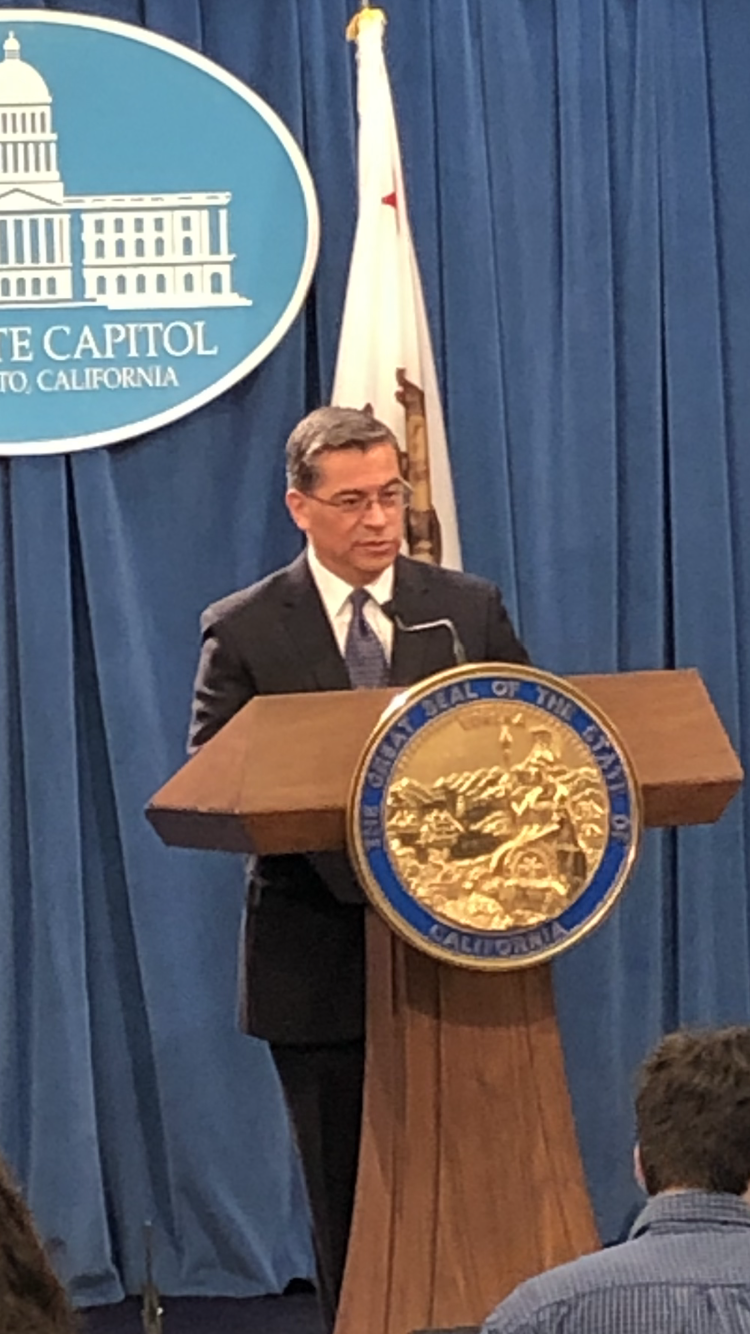
The Consequences of California’s Centrally Planned Compassion
California is not running out of open space, and claiming that expanding cities causes climate change is a preposterous lie
By Edward Ring, February 10, 2021 2:35 am
Sixty years ago, when California was governed by people who were sane pragmatists, homes were affordable and very few people were homeless. To support new housing, government funds were focused on building enabling infrastructure. California’s freeways and expressways connected new suburbs to urban cores, and the California Water Project delivered abundant water to the growing population. As a result, industry, jobs, and people poured into California, attracted by the beautiful weather and the low cost-of-living. Back then, California was the best place on earth to live.
For at least the last twenty years, California politics have been controlled by leftist ideologues. Their policies are impractical, the consequences are insane. Homes are unaffordable and entire cities have been taken over by homeless encampments. California’s infrastructure is neglected, and the ability of private developers to profitably build homes that normal people can afford has been destroyed by overregulation. In 2020, for the first time since achieving statehood over 170 years ago, California’s population actually declined.
How California’s politics devolved between 1960 and 2020 to put the state into its current predicament is a long story, but two overriding principles governed the descent into madness and dysfunction: a preference for central planning and misguided compassion. With compassion as the moral imperative driving concern over poverty, racial injustice, and, more recently, climate change, California’s politicians turned increasingly to central planning to solve these crises. And because central planning does not work, and has never worked, the crises have just gotten worse.
The evidence used to justify California’s centrally planned, supposedly compassionate polices is “disparate outcomes.” The power of this concept derives from its quantifiable, quasi-scientific veneer. As soon as a statistic is discovered that identifies how some group has collectively achieved less than some other group, a moral imperative is created to correct the injustice. In terms of groups with which to construct these statistical bludgeons, there is infinite material: men vs women, cis vs trans, straight vs gay, and white people vs people of color. In all cases, the former is the privileged oppressor, and the latter is the disadvantaged, underprivileged victim.
It is easy enough to see the appeal of these concepts to leftist ideologues. The compassionate, collective response to injustice requires a powerful, centralized government response, in order to correct the injustice and uplift an entire community to the status it deserves. But both of these key concepts, compassion and a centrally planned solution, are deeply flawed. Central planning is inherently flawed. Compassion is flawed in its execution.
The obligations of compassion must include a recognition of human nature. When disparate group outcomes are mitigated, and equality is enforced by the state, it creates an incentive for mediocrity and indifference. This is because under enforced equality, the worse a group performs, the more it will get, and the better a group performs, the more will be taken from them. So why work?
The Moral Necessity of Economic Stratification
Comparing how California handled housing sixty years ago compared to today can help explain why central planning to eliminate disparate group outcomes is a fool’s errand. The much maligned reality of housing sixty years ago was that it was economically stratified. To the extent this was driven by redlining and other racist policies, this stratification was immoral. But well established laws now prohibit racial discrimination. What was not immoral, however, was the overall concept of economic stratification. How this worked requires a moral defense.
Using local zoning laws to create stable neighborhoods, California’s suburbs were able to develop in a predictable pattern around every city. All of it was market driven. Close to the urban core, higher density housing including apartments were built. Further from the center of town, neighborhoods with detached homes were built. On the periphery, larger homes on larger lots were built. There were exceptions, but the market, relying on the stability of zoning laws, drove the process. For example, some cities had neighborhoods with larger homes on larger lots that were situated very close to the urban core. But in those cases, these homes were highly sought after and were more expensive than similar housing on the urban periphery. Occasionally, low density neighborhoods in particularly desirable spots became economically untenable and were rezoned. But this happened organically, judiciously, and locally, and not through centrally planned edicts.
The point isn’t merely that all of this worked economically because politicians had not yet created unaffordable housing through overregulation. The point is there was a moral worth to this economic stratification. People who lived in inner city apartments knew that if they worked hard they could save money and buy a detached home in a suburban neighborhood. People who lived in suburban neighborhoods knew that if they worked hard, they could move into a bigger home with a bigger lot. All of them relied on zoning to protect the ambiance of whatever it was they’d worked for and achieved so far. And people who were out of work or were marginally employed might end up on skid row, where residential hotels charged by the week for a room.
This is not the description of a perfect world. But it worked better than what we have today. As a percentage of the population, homelessness was far less, and homes were affordable. People across all income groups had the ability to invest and build multi-generational wealth. What is happening today in the name of compassion for the homeless is yielding only failure. Billions have been spent. Billions more will be spent. And it is making the problem worse.
The Compassionate Destruction of Venice Beach
A harrowing example of what is being done to California by its politicians in the name of compassion is the destruction of Venice Beach, which used to be one of the most charming neighborhoods in Los Angeles. The estimated number of homeless living in this three square mile district now exceeds 2,000. Despite a median price for homes in Venice Beach at over $2.1 million, instead of relocating homeless to shelters in less expensive parts of Los Angeles County, homeless shelters and “permanent supportive housing” is being constructed in the heart of Venice Beach at staggering costs.
Currently there are eleven homeless housing projects either proposed or already built in Venice Beach. The cost to taxpayers for these projects is estimated in the hundreds of millions. At best, they will house 700 people, barely one-third of the homeless currently living in Venice Beach. One of these proposals, the Reese Davidson Community, is to be built on a 3 acre parcel currently used for community beach parking. It will have 140 units, at an estimated cost of well over $100 million. This is insane.
Voters and politicians sincerely motivated by compassion need to reflect carefully on these costs, which are fairly typical. Imagine how much could be done with $100 million, if it was spent on shelter housing in less expensive places. But thanks to the compassionate value of inclusion, and the allegation that people who work hard to pay exorbitant prices to live in Venice Beach are “privileged,” the zoning laws that lead to economically stratified neighborhoods have broken down. And it gets worse.
Obviously offering free housing in a community located along a beach in Southern California just creates a magnet for even more people to arrive, unhoused and unemployed. But with the passage of Prop. 47, California has effectively decriminalized possession of hard drugs and petty theft, and to the extent laws remain on the books, Los Angeles County District Attorney George Gascon is not adequately enforcing them. And thanks to the federal “Housing First” mandate coming out of the Obama administration in 2009, no shelter or supportive housing project can receive public funds if they make sobriety and job training a condition of admittance. More insanity.
Venice Beach today is a crime haven. A recent report by the Venice Beach Public Health and Safety Committee found that the homeless shelters and “housing hubs” located in Venice Beach have been the source of the majority of police actions. But with the besieged LAPD short on officers and funds, and with a crime-friendly District Attorney, nothing can curb the rising crime. The reality of these housing projects is that if they were a private business and were generating this number of police responses, they would be shut down. The model is broken.
How to Solve the Homeless Crisis and Make Housing Affordable Again
The current direction of homeless and housing policies in California will lead either to an economic crash as the burden of government subsidies and entitlements finally becomes unsustainable, or, perhaps worse, California’s middle class will be utterly destroyed as “inclusive” zoning destroys residential suburbs. Subsidized investors will purchase and demolish detached homes, replacing them with apartments where people will live for free and with no conditions on their behavior. Only the very wealthiest neighborhoods will be able to afford perpetual litigation to chase away these developers. The incentive for people to work will disappear.
There is an alternative to this dismal future. Policymakers can learn from the example of 1960s California. They can learn from the mistakes that were made, of course, but they can also restore the best practices that made California such a wonderful place to live. They may recognize that almost everybody, regardless of ethnicity, aspires to raise families in detached homes in spacious suburbs. Biased surveys that make claims to the contrary omit a crucial opening phrase from the question: “IF you could afford it,” would you prefer to live in a detached home with a yard? That’s a big IF.
Instead of seeding intact neighborhoods with scandalously expensive subsidized housing projects that turn into crime infested drug dens, local authorities should be able to enforce stricter laws against intoxication, vagrancy and petty theft. They should be able to move offenders out of otherwise pleasant neighborhoods and into supervised, inexpensive tent encampments where they can sober up and get put to work. Central planning from Sacramento should not be imposing one-size-fits-all homeless and housing solutions on California’s cities and counties, especially since the “solutions” coming out of Sacramento are just making problems worse.
To solve the housing shortage, which is politically contrived, the laws that are cordoning off California’s cities and only permitting development inside preexisting boundaries must be scrapped. California is not running out of open space, and claiming that expanding cities causes climate change is a preposterous lie. Deregulate the housing industry, and spend public money on freeways and water projects instead of high speed rail and subsidized housing. Abandoning those boondoggles will free up tens of billions to build new enabling infrastructure.
There is no reason why Californians cannot have the same opportunities that were available to their grandparents, two generations ago. But they need to recognize that “compassionate” polices that only result in increasing the numbers of homeless people, tragically addicted to drugs and crime, is not compassion. And central planning designed to rescue victims of “disparate outcomes” will merely serve to make everyone oppressed, as it destroys the motivation and ability for people to pursue individual achievement.
These are tough realities, but acknowledging them can lead to beautiful outcomes.
- Ringside: EVs and California’s Future Demand for Electricity - December 4, 2025
- Ringside: Politically Viable Water Supply Projects - November 27, 2025
- Ringside: Shifting Costs Does Not Solve California’s Electricity Shortages - November 20, 2025





The solution to almost every problem in America today is to remove Democrats from every office.
Central planning is about control. Control cannot be exercised with prosperity and plenty. Central planners cause poverty and shortages to leverage control. Power is the goal and the elites celebrate the ever widening gap between them and the controlled with the goal of all for them and Nothing for you.
@CW
Well said!
There’s a big part of California development we forget about: the Interurbans.
Prior to the Great American Street Car Heist, California had the best privately-owned public transportation in the world. All of Southern California’s best development was thanks to the Pacific Electric System. In NorCal there was the Key System in the East Bay, and in 1939, it was possible to take an electric trolley all the way from San Francisco to Chico. Obviously, this all profoundly influenced development patterns.
So, California did have Central Planners: their names were Stanford and Huntington.
The author is right about the solution – “Policymakers can learn from the example of 1960s California. They can learn from the mistakes that were made”. Of course the chances of the California ruling class learning anything from the past are pretty much zero, they don’t want to learn, they want to rule. Which is why this lifetime 63-year resident has bought a house in Idaho. Following our 4 kids there who already decided that there is no future for them in California.
@Edward Ring, this is one of the best editorials I have read about the ruinous results of centralized California democratic control we have been suffering under for decades. One of my favorite statements sums up our current state: “But thanks to the compassionate value of inclusion, and the allegation that people who work hard to pay exorbitant prices to live in Venice Beach are “privileged,” the zoning laws that lead to economically stratified neighborhoods have broken down.” Born in the sixties and relatively poor, I did not want to live as I grew up. I embraced the morals of responsible living: education, hard work, saving/investing for future and prioritizing my family. I strove to live in better neighborhoods to raise my family in relative safety. I do not have any hope for California “leadership” or general citizens to return to sane policies. The “compassion of inclusion” you spoke about is well engrained in the “allegory cave” that is California’s mentality.